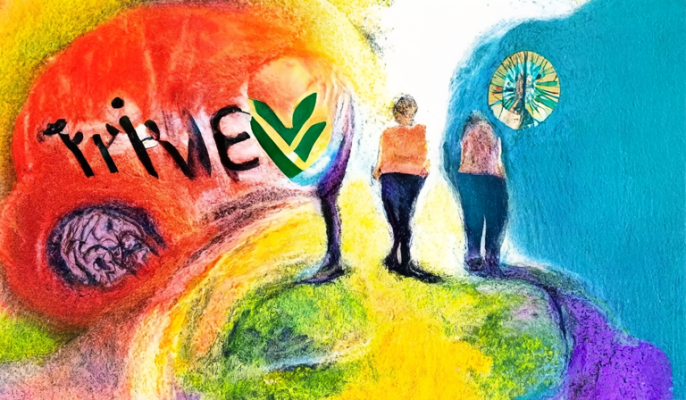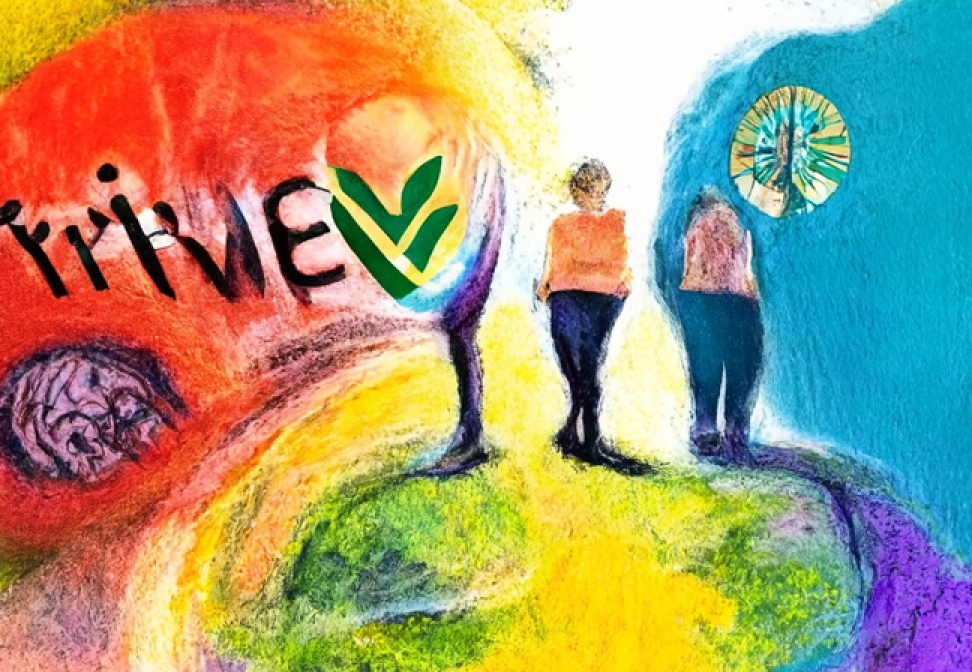What Exactly Does Being “Trauma-Informed” Mean?
My journey as a mental health practitioner started later in life. I was in corporate finance, like many “good” Asian children, I did what my parents wanted me to do! After five years, I decided to retrain as a clinical psychologist.
When I did my placement at a public hospital, I saw patients with various mental health conditions, but in that setting we didn’t have the time to explore, like, “Hey, what happened to you?” It was focused on the symptoms and the intervention.
My first job was with an NGO working with underprivileged youth, to provide mental health services to them. In a community setting, we had more time to observe and understand our clients.
I met this young man, about 18 years old. His teacher noticed that he was very intelligent but somehow it did not translate into his academic results and he couldn’t seem to focus. And he would overreact when his friends tease him and become aggressive and extremely defensive.
When he came to me, I could see that while he was 18, physically he looked like he was about 12 or 13. And he shared about his problems sleeping and concentrating and he blamed himself, like “I’m stupid, I don’t know anything.”
But actually, I learnt that he had experienced physical abuse, he witnessed substance abuse in the family, chronic poverty, all of these things. So what he was actually showing was the effects of developmental trauma.
I started noticing these similar themes in my work, and that was when I realised my limitations as a practitioner. Therapy and psychological assessments are only one part of it. I had to understand more and connect it to what is needed in the system, like healthcare services, social services and education.
I was fortunate. When I travelled to Australia for a holiday, I joined a training workshop on trauma-focused cognitive behavioural therapy (CBT). As I began to do my own research, a colleague joined our team and she was trained in the US on trauma-informed care (TIC), and that accelerated my learning.
What is trauma?
Adverse experiences are challenging events, environments, or circumstances that people go through. Many of us would have gone through one or two such experiences, but when we talk about trauma, we are talking about the impact of these adverse experiences.
We often think trauma has to be a life-threatening experience, like a car accident or war. But trauma is something continuous and systematic, such as emotional neglect, physical abuse and sexual abuse.
And any social or economic adversities can also be classed as trauma if it is impacting the person physically, emotionally and behaviorally.
In children, trauma response usually takes the form of behavioural changes, because children may not have the language to express their thoughts and emotions and often manifest in physiological or behavioural responses.. They may be unable to focus and become very withdrawn. They may have prolonged periods of nightmares or bed-wetting.
In adults, symptoms can be prolonged fatigue, feeling disconnected, or behaviours like addiction. We have clients whose self-esteem has been impacted, and they become withdrawn and reluctant to engage in any form of relationships. Or they could be very self-critical and think they are not good enough. They are very sensitive to criticism.
In severe cases, a person with post-traumatic stress disorder will experience intrusive thoughts about the experience and flashbacks where they re-experience what happened to them.
To most people, they may appear to overreact to what seems like a normal situation. But when it comes to trauma, we have to look at the intensity of these reactions, the duration, the frequency, and the impact on functioning. Does it happen often? Is it very intense? How long has it been happening? Is it affecting their functioning, such as going to school or work, or their relationships?
Why recognising trauma matters
Prolonged trauma can affect specific areas of the brain. Children’s brains are not fully developed and there is evidence showing that multiple doses of trauma impair the brain and affect the ability to regulate emotions and to focus and concentrate.
Regulating emotions is very important for young children, because it affects their social interaction, how they problem solve, and how they sustain the attention to complete a task.
In the example of my 18-year-old client, it also blunted his emotions. He would describe his physical abuse in a sing-song way and his emotions about the situation were blunted because he had to cope with the trauma. His brain neutralised it to the point where he didn't even realise that it was something that children should not experience.
Professionally, when we understand this, we can help to shape the service, or care. So instead of writing him off as a lazy student, we recognise it is a call for help. And we de-stigmatise the person from blaming themselves and losing hope.
What is trauma-informed care?
Trauma-informed care is about the 4Rs: realise, recognise, respond, and resist re-traumatisation. It starts with realising what trauma is and what happened to you, followed by recognising how trauma affects you.
This young man, for example, was very defensive and aggressive in social interactions. So when he started recognising, “Oh yeah, I don’t have any friends”, he then had more motivation to focus on how he can help himself. So, that's the third part, respond. If they don't realise and recognise, they find it very difficult to respond, to do something that helps them, whether it's through therapy, education, or social services.
The last step, resisting re-traumatisation, is where advocacy becomes very important. As an individual, there are a lot of things they cannot change in their life. That's when they feel helpless or hopeless.
So as a practitioner, I “case manage”. I work with the teachers, the wardens in the dorms, and get them to understand that these reactions come from the adversities he had gone through, and it’s a trauma response. And when a certain situation happens, this is what could de-escalate the situation.
So TIC doesn't put sole responsibility on the person to do something; if the environment and the social circle also support him, recovery is a lot easier, and the person becomes more resilient.
We can’t do it alone
One thing I have learnt since my young and naive days, is that we can't help everyone, because there's so many individuals out there.
At Thrive Well, our focus now is on building a task-sharing model. We identify professionals, for example, health care workers, social workers, and we provide TIC training to them.
We support the supporters first, because when we support the supporters, the supporters can then continue to provide the services with the right dose of compassion and care.
A big part of our programme is going to the communities at risk and working with community leaders, as well as the professionals serving these communities. You have to identify the players in the system that can enable the community to heal and recover.
To become a more empathetic community, we have to start with ourselves. Understand that we all go through adversities and it impacts us. Have kindness and compassion for ourselves, like, “Hey, I'm going through something”.
When we are self-aware, we are able to share and provide a supportive, compassionate environment for others to share. And get them the support they may need. So let’s start with ourselves and impact our families and friends.







